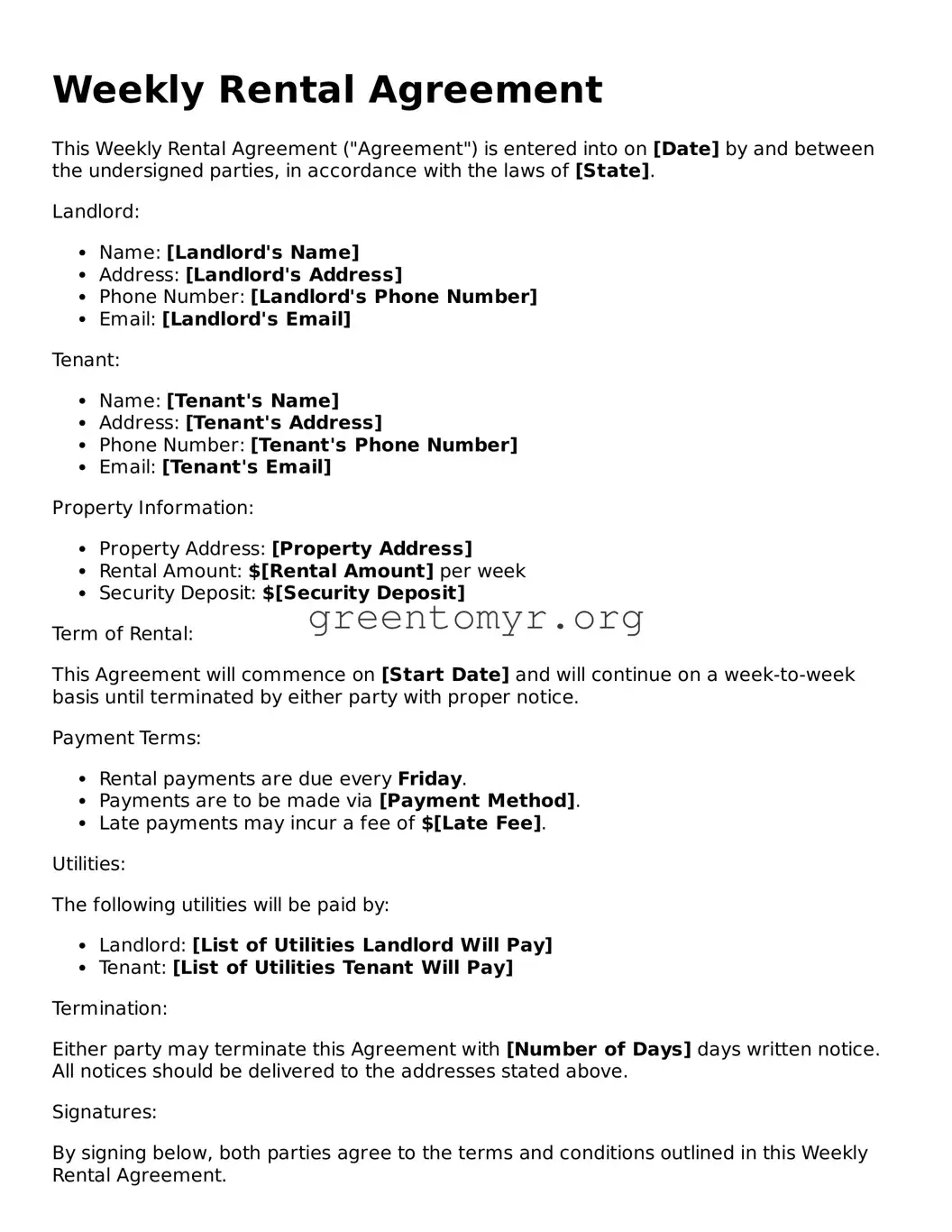Weekly Rental Agreement
This Weekly Rental Agreement ("Agreement") is entered into on [Date] by and between the undersigned parties, in accordance with the laws of [State].
Landlord:
- Name: [Landlord's Name]
- Address: [Landlord's Address]
- Phone Number: [Landlord's Phone Number]
- Email: [Landlord's Email]
Tenant:
- Name: [Tenant's Name]
- Address: [Tenant's Address]
- Phone Number: [Tenant's Phone Number]
- Email: [Tenant's Email]
Property Information:
- Property Address: [Property Address]
- Rental Amount: $[Rental Amount] per week
- Security Deposit: $[Security Deposit]
Term of Rental:
This Agreement will commence on [Start Date] and will continue on a week-to-week basis until terminated by either party with proper notice.
Payment Terms:
- Rental payments are due every Friday.
- Payments are to be made via [Payment Method].
- Late payments may incur a fee of $[Late Fee].
Utilities:
The following utilities will be paid by:
- Landlord: [List of Utilities Landlord Will Pay]
- Tenant: [List of Utilities Tenant Will Pay]
Termination:
Either party may terminate this Agreement with [Number of Days] days written notice. All notices should be delivered to the addresses stated above.
Signatures:
By signing below, both parties agree to the terms and conditions outlined in this Weekly Rental Agreement.
_____________________________
Landlord Signature: [Landlord's Signature]
Date: [Date]
_____________________________
Tenant Signature: [Tenant's Signature]
Date: [Date]
